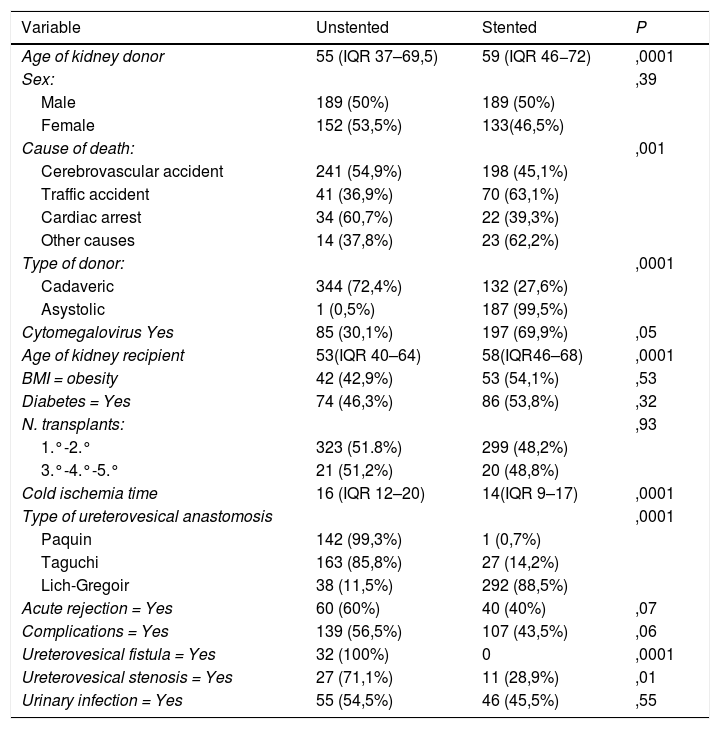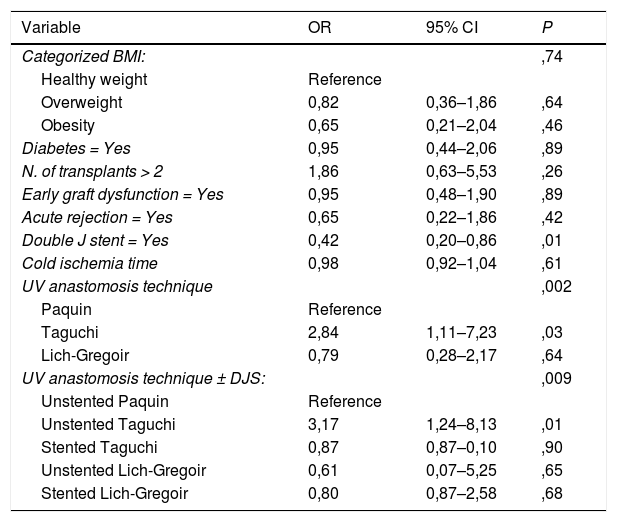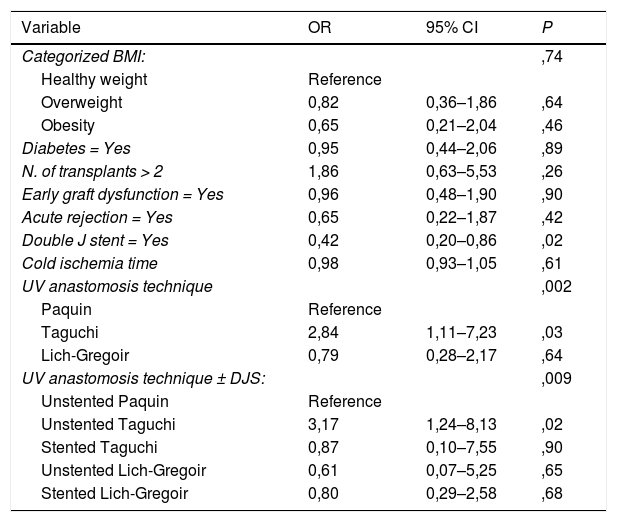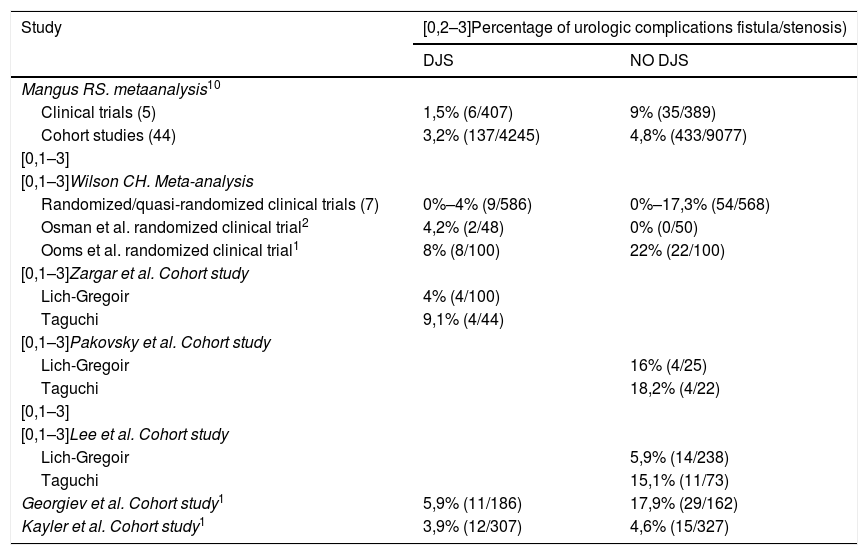Complications arising from ureterovesical anastomosis in kidney transplantation have an important influence on the success of the procedure. The most serious and frequent complications are fistula and stenosis of the ureterovesical junction. The placement of double J stents in anastomosis is currently recommended to reduce these complications.
ObjectiveThe aim of the study is to evaluate whether the placement of a DJ stent affects complications of anastomosis.
Material and MethodsRetrospective analysis of 697 patients treated with cadaveric donor renal transplant in our center from 1999 to 2018 was performed. Results were compared according to double J stent placement and the surgical technique employed for anastomosis.
ResultsTransplantation was performed without DJ placement in 51.7% of the patients, compared to 48.3% who were treated with DJ stent placement. The most commonly used technique was Lich-Gregoir. Ureterovesical fistula occurred in 5% of cases, and ureterovesical stenosis in 4.2%. DJ stent behaved as a protective factor for ureterovesical fistula but did not significantly influence the development of stenosis. The Taguchi technique greatly increased the risk of developing both ureterovesical fistula and stenosis. The incidence of stenosis and fistula was significantly higher when the Taguchi technique was combined with no DJ stent placement.
ConclusionDJ stent placement acts as a protective factor for ureterovesical stenosis complications. The results of our study seem to agree with current literature.
Las complicaciones surgidas de la anastomosis vesico-ureteral en el trasplante renal influyen de forma importante en el éxito del trasplante; siendo las más graves y frecuentes la fístula y la estenosis de la unión uretero-vesical. Actualmente se recomienda la colocación de catéteres doble J en esta anastomosis para reducir estas complicaciones.
ObjetivoEl objetivo del estudio es evaluar si la colocación de un CDJ influye en las complicaciones de esta anastomosis.
Material y métodosSe ha realizado un análisis retrospectivo de 697 pacientes tratados con trasplante renal de donante cadáver en nuestro centro desde 1999 hasta 2018; y se ha comparado los resultados en función del uso o no de catéter doble J y la técnica quirúrgica realizada en la anastomosis.
ResultadosEn 51.7% de los pacientes no se colocó CDJ; frente a un 48.3% en los que sí se colocó. La técnica más utilizada fue Lich-Gregoir, Se produjo fístula uretero-vesical en un 5% de casos, y estenosis uretero-vesical en un 4.2%. El CDJ se comportó como factor protector de fístula ureterovesical, pero no influyó significativamente en el desarrollo de estenosis. La técnica de Taguchi multiplicó el riesgo de desarrollar tanto fístula como estenosis uretero-vesical. La incidencia de estenosis y de fístula fue significativamente mayor al combinar la técnica de Taguchi con la ausencia de catéter.
ConclusiónEl CDJ actúa como factor protector para las complicaciones de la estenosis uretero-vesical. Los resultados de nuestro estudio parecen ir en concordancia con la literatura actual.












